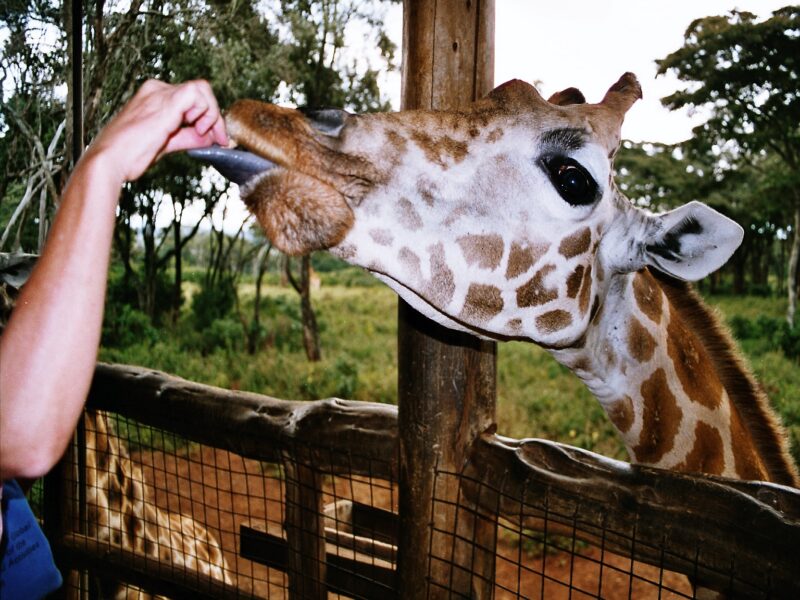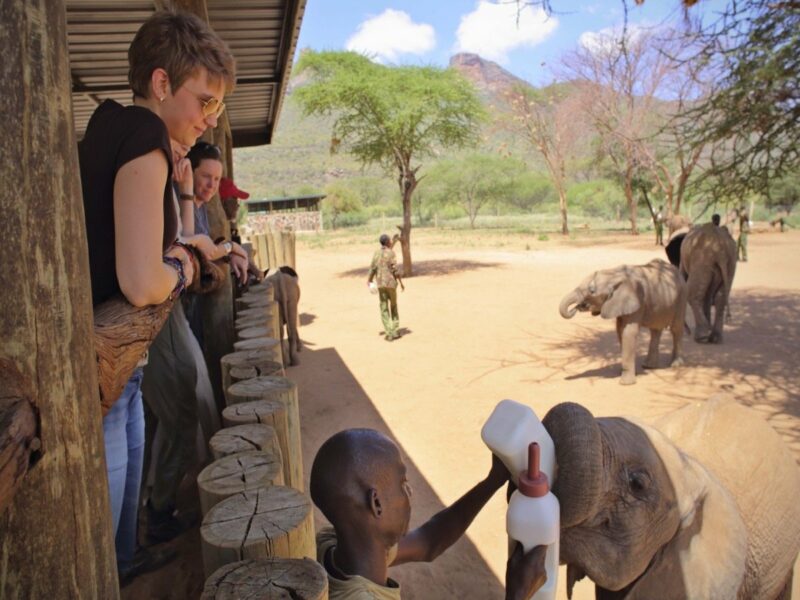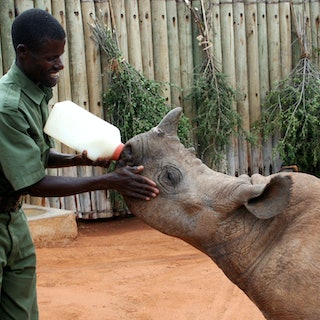A traditional safari is one where you typically stay in a lodge or a tented camp, and go out on game drives twice a day. The drives are done either in a 9 seater minivan, or a 4WD Landcruiser, depending on the budget of the traveler. Using these vehicles for game drives allows you to see wildlife and even get quite close to them, but this is more of a passive way to view game. Some high end camps have game drive vehicles that are open sided so there is less of a barrier between you and the wildlife.
Now what happens when you want more from your safari? Many travelers want more interaction with the wildlife, but stepping out of your vehicle is a definite no-no, and encouraging wildlife to come to you is not encouraged. We have found 6 ways for you to interact with wildlife in a controlled environment.
- Sheldrick Wildlife Trust, Nairobi Nursery Unit
The Trust began by rescuing elephants who were orphaned, either by poaching activities, drought or other natural disasters. The orphaned elephants are kept in the Nursery Unit, and given 24 hour care by keepers, until they are old enough to be released into the wild. You can visit these orphaned elephants daily, between 11 am and 12 noon (except for Xmas Day), by prebooking your slot, and paying a fee of US$ 15 per person.
Spend the hour watching these adorable orphans interact with their keepers, while learning about the work of the Trust. The Trust also rescues rhinos and other orphans, besides elephants.
- The Giraffe Centre, Nairobi
The Centre was established in 1979 by the Africa Fund for Endangered Wildlife (AFEW), and it is here that you are given the opportunity to come into close contact with the world’s tallest species, the giraffe, and in particular the Rothschild giraffe. The Centre is also an Education Centre, educating thousands of Kenyan school children every year. The Centre is open daily, and the cost to visit is US$ 15 per person.
You can feed the giraffe from a feeding platform (the pellets are provided by the Centre), visit the Information Centre to learn about the giraffe and other wildlife, take a stroll through the 1.5 km nature trail looking out for squirrel, dikdik and warthogs, or visit at the Tea House and enjoy some refreshments (extra cost).

- Ol Pejeta Conservancy, Laikipia
The Conservancy has a resident black rhino named Baraka. Born in the wild, he lost his eyesight in a fight and ever since then, has been confined to an enclosure next to the Information Centre, for his safety and wellbeing. You can visit Baraka daily between 10.30 am to 6 pm and feed him his favourite treat of sugarcane, from an elevated feeding platform. The visit is free, but you have to pay the conservancy entrance fee of US$ 90 per person per day to enter the conservancy.
Also, at Ol Pejeta, you can come up close with the last female northern white rhino, daily from 3 pm to 4 pm. This activity has to be booked in advance, and costs US$ 60 per person, exclusive of transport to the boma enclosure.
- Reteti Elephant Sanctuary, Namunyak Wildlife Conservancy
This Sanctuary came into being due to the demands of the indigenous Samburu communities in the area, who wanted to retain the elephant population in the area. As they want to take ownership of the rescue and rehabilitation of orphaned elephants, this Sanctuary is run completely by the community. The Sanctuary rescues between 10 – 25 elephants in a year – these elephants have been orphaned due to drought, man made wells, human wildlife conflict and natural mortality.
You can visit the orphans here, daily between 8.30 am and 10 am or between 11 am and 1 pm, by making a booking and paying US$ 35 per person for a standard visit, or US$ 500 per group + US$ 35 per person for an exclusive visit.
During your visit, one of the keepers will talk about their work and answer any questions you might have. You can watch the orphans from a specially constructed viewing platform, coming in from their walk to receive their bottles and enjoy mud hole playtime. This is followed by a behind the scenes tour of the Sanctuary.

- Ol Chorro Conservancy, Aitong
In this Conservancy located to the north of the Maasai Mara Game Reserve, 2 white rhinos are kept under 24 hour protection. You can visit with them anytime during the day, take selfies with them and generally get close to them.
There is no charge for this visit, though you can donate funds for the upkeep of the rangers who are tasked with protecting the rhinos, but you have to pay to enter the Conservancy and to stay at one of the properties here.
- Ol Jogi Conservancy, Laikipia
The Ol Jogi Conservancy runs a Rhino Sanctuary, as well as a Wildlife Rescue Centre where all sorts of wildlife, from elephants to cheetahs are rescued and rehabilitated before being released back into the wild.
You can only visit the Sanctuary and the Rescue Centre if you are staying at the lodge on the property. As the lodge only offers exclusive use of the lodge, this can be a very costly exercise.
So which one will you choose??


Comment (0)